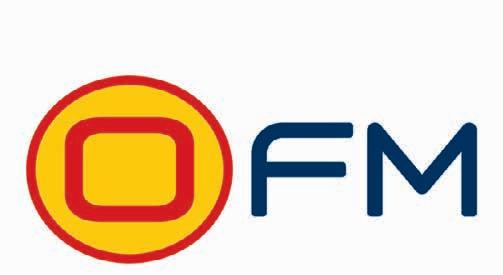
9 minute read
RADIO: SOUTH AFRICA
Radio isn’t on mute, so turn it up!
While last year was a trying one for the radio industry, it also once again proved its value and agility, writes TIM ZUNCKEL.
If there was a year to prove that radio is tenacious, agile, tactile and versatile, 2020 was it. Add elements of care, compassion, fun and understanding alongside information, entertainment and news, and you really do seem to have the perfect media ‘friend’.
While the country was changing gears between lockdown levels, making sense of the new normal and telling the person on the other side of their buffering screens, “You’re on mute, we can’t hear you,” radio was turning up the volume and delivering a message that was loud and clear to audiences and advertisers:
“You can depend on me.”
The 2020 radio landscape changed daily as stations and practitioners set their best-laid plans and strategies aside, and recalibrated their programming plans to serve audiences and communities much-needed information at the peak of the pandemic.
The year put focus on the value of well-planned broadcast systems, solid technical staff and in-tune programming teams. Empty studios, remote connections and rejigged programming plans saw the radio industry embrace the collective psyche of their communities. Working at home, being removed from loved ones, sharing moments, laughing, thinking, being lonely and getting sick – radio did it all.
The true agility of the medium was highlighted by the fact that there weren’t huge recalibration shifts, but rather constant change and calibration as the daily needs changed.
Besides the obvious, there were other challenges too. We saw many broadcast groups undergo organisational change, with retrenchments sweeping the industry. A shift in needs and required skills, a changing consumption landscape and commercial pressure have seen many experienced practitioners within organisations unemployed.

Tim Zunckel
The short-term effect is devastating on the individuals, but I believe in many instances the need to refresh and push F5 at station level is key to ensuring long-term survival. I do think that as things settle this year, we will see those with unique skills in sales, marketing and operations add value as organisations feel the effects of shrinking teams. The need for campaign/project-based assistance and input will grow, and there will be a revival of creativity, ideas and energy. Those who can, will.
IT STARTS WITH COMMUNITY
The community sector remains a key player in the radio sphere. Financial challenges have been mitigated by ad hoc funding, government spend and support from the Media Development and Diversity Agency (MDDA), and these interventions have managed to keep the transmitters on for many community broadcasters. It is heartening to see a push from the MDDA in the sector to address sustainable funding models and operational management training. There is no doubt that community radio is a pillar of society and a key contributor to the media sector.
Community radio continues to be a source of talent development and identifi cation. As a sector I think they have a right to be slightly less than enchanted with their commercial counterparts who snatch and recycle. Talent development, in all facets of the audio entertainment and delivery value chain, remains an issue.
The next year will see more opportunity unfold in the on-demand space, and as the industry slowly, very slowly, chips away at DAB+, the need for fresh and unique talent, ideas and concepts is more pressing than ever.
My message to young, astute and creative practitioners is that the broader industry has yet to refresh their thinking on talent. There has never been a better time to leverage your own talent and create in your own space. If there is one lesson to learn from older broadcasters, it is not to allow your future audio career to be dictated by established broadcasters; the audio business is expanding and it needs your refreshing inputs.
KEEP LEARNING
Research remains a space that enjoys budgetary consideration at a commercial level. The insights coming out of various organisations point to similar trends. Radio is trusted, audiences are consuming in different places and on different devices, there is digital platform traction, and audiences enjoy the content and promotions offered.
The Broadcast Research Council (BRC) is looking to refresh its approach to audience data and this will certainly be an area that broadcasters will be keen to follow. For community media and SABC Radio, BRC Radio Audience Measurement is crucial to prove value for clients, as both the public and community sector operate in a generally research-lite or absent fashion. The data is also key for clients and agencies to help better inform the buying and placing of campaigns.
Radio’s tactile approach in 2020 allowed it to offer value to businesses looking to innovate in the heart of notably quiet in the last year compared to previous years and regimes. Were the right decisions made and has the Minister of Communications had her final say yet? ICASA continues to regulate with often-unwieldy policy that allows for a fair degree of interpretation. There are still commercially awarded licenses in the Free State and the Eastern Cape that have yet to go live and a variety of other compliance issues that plague the industry. As an organisation they face major developments in the tech and frequency spaces that must be hugely challenging to address. When the sanitiser bottles and thermometers get packed away and the industry is able to meet again, I’m sure there will be stories to be told. I’m also hoping that as a business we will take an opportunity to acknowledge the vital role played by our industry in the most challenging times the modern world has seen.
Radio isn’t on mute. Mamela. We can hear you. In the words of Queen, “Radio, someone still loves you.”
lockdown. Reaching people in their homes and offering constant value allowed the industry to remain commercially attractive. The commercial sector has indicated that there were definite declines in revenues, but the shift to online eventing and concerts, as well as very lucrative airtime deals and discounted airtime, has led to revenue being maintained. Considering the scale of businesses closing down and job losses, the radio sector has certainly shown economic resilience.
TUNING IN TO THE FUTURE
With face masks still replacing pop covers, what else does 2021 hold?
The SABC will continue to be an organisation in flux. Colleagues who have survived the onslaught of the S189 will tell you that the Auckland Park facility is notably empty. Has the organisation retrenched the right people and are they now better suited to become sustainable? The SABC board has been
Tim Zunckel is a media consultant, creative programmer, trainer, problem solver and lover of audio who is always keen to engage, and share thoughts and ideas. @TimZunckel


OFM and its loyal listeners
Any chance to learn something should be met with an open mind if we are to unlock future opportunities. While 2020 was dubbed ‘stifling’, there was a silver lining amid the dark cloud of Covid-19 for media and, most especially, for radio.

We learned that while everything was falling apart and credible news was hard to come by, OFM was a brand relied upon by its audience for accurate and trustworthy information related to the coronavirus.
We learned that radio listening was up by 30% (Kantar) by May 2020 and that 71% of Central South Africans listened to more radio than usual, during the then lockdown, across all of OFM’s available platforms – radio, mobile and desktop apps.
The absence the Broadcast Research Council’s (BRC) Radio Audience Measurement Survey meant that OFM had to inform itself about its audience and their media consumption habits. The last reading pinned OFM’s 7-day cume at 315 000 listeners. The pandemic forced the brand to be more insights-driven than ever before. Our independent research studies and insights paved the way for more agile products that met a demand that otherwise would have not necessarily have been discovered.
But radio is more than an extended aerial with a tuner and speaker. The modern age has given radio the opportunity to expand and meet its audience in cyberspace.
OFM has spent much of the last three years aggressively investing in and developing adjacent digital platforms including social media, desktop and mobile apps, as well as a revamped website and streaming service, OFM Stasie2. OFM’s online users have increased almost 2% year-on-year to 1.745-million online users by December 2020 and a further 260 000 unique online streams. This excludes the ambitious podcasting planned for 2021, which includes an association with leading podcast publisher, Wondery.
WHAT DOES THIS ALL MEAN?
OFM is creating an ecosystem where the brand and listeners can find and access each other across various and different platforms. We know that in 2021, OFM listeners indicated that they are likely to listen to more radio, and streamed audio services, than they did in 2020. • 54% of OFM listeners indicated that they are likely to consume more radio • 65% indicated that they already listen to more radio between 06:00 and 09:00 and that many kept their radio tuned onto OFM from 6am, in the car, at home and at work. An insight, revealed time and time again from the
BRC RAMs, is that OFM has one of the highest instances of time spent listening over 7 days – 20.97 hours • 16% indicated that they are likely to consume more streamed audio offerings. “The study indicates the absolute strength of radio and audio consumption, listener engagement, and the loyalty OFM listeners have toward OFM. In 2021, OFM turns 35 years young and the station can be proud that radio and audio consumption is getting stronger,” said Nick Efstathiou, CEO of the Central Media Group, holding company of OFM.
This translates to the absolute value of audio. Where there is engagement, there is a prospective solution, and radio sits at the table of this digital revolution. Audio remains inescapable and OFM intends to build on the legacy of its last 35 years in audio.
WHO IS OFM?
OFM is Central South Africa’s premier commercial radio station offering a mix of music, news and entertainment. The station serves the influential SEM 7-10 market with a footprint across the Free State, Northern Cape, southern Gauteng and North West. The brand is synonymous with the people of central South Africa and covers the full spectrum of listeners from urban youngsters to pensioners, from working moms and dads to successful professionals, and from rural communities to agricultural producers. OFM offers a number of niche features – including an agricultural programme, agri news twice a day, entertainment and sports features. Our audience is incredibly loyal and supportive. OFM enjoys one of the highest instances of time spent listening to the radio in South Africa. OFM is part of the Central Media Group with its head office is located in Bloemfontein, with a studio in Welkom.
www.ofm.co.za.









